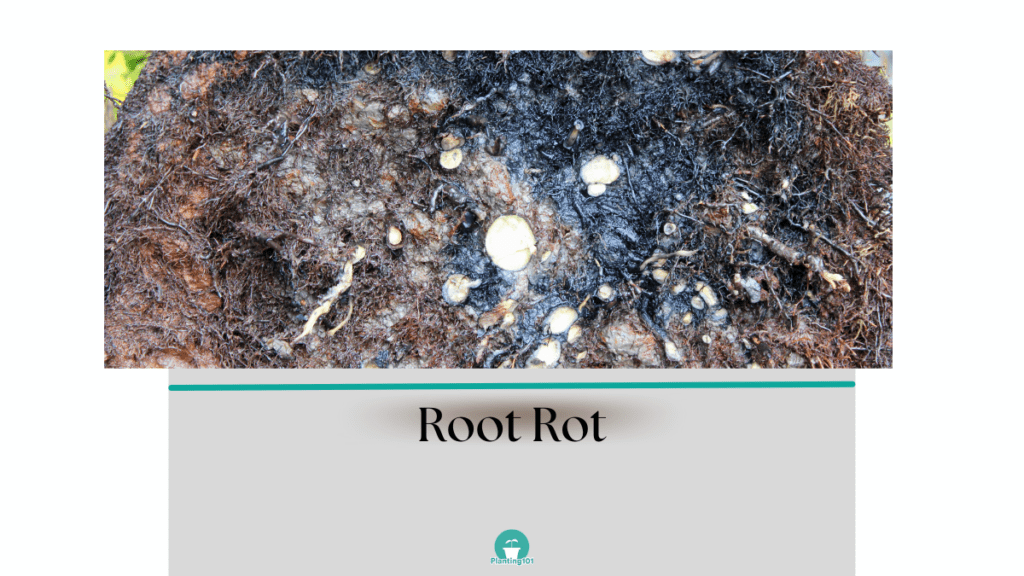Kentia Palm (Howea forsteriana and Howea belmoreana) are easy-to-grow houseplants with cascading palm leaves. It grows well in low light and can tolerate some neglect. It’s a great houseplant for beginners. Howea belmoreana is shorter than Howea forsteriana. Here are tips on how to take care of your Kentia Palm indoors.

Kentia Palm Infographic

Kentia Palm Basics
| Name | Kentia Palm |
| Scientific Name | Howea forsteriana and Howea belmoreana |
| Care Level | Easy |
| Light | Bright indirect light |
| Daytime Temperature | 65 to 75F (18-24C) |
| Night Time Temperature | 55-65F (13-18C) |
| Water | Moderate Water |
| Humidity | High Humidity |
| Potting | Well-draining, organic, all-purpose potting mix |
| Fertilizer | Once every 2 weeks at half strength in the Spring and Summer. Don’t fertilize in the Fall and Winter. |
Kentia Palm: Other Names
Kentia Palm is also called Sentry Palm, Thatch Palm, Paradise Palm, Belmore Sentry Palm and Curly Palm.
Kentia Palm: Varieties
Howea belmoreana- is shorter than Howea forsteriana
Howea forsteriana- is slow growing and shaggier than Howea belmoreana
Kentia Palm: Size
Kentia Palm is a large houseplant that can grow to 8-10 feet tall and 5-6 feet wide.
Light
Kentia Palm: Sun or Shade?
Kentia Palm grows best in bright, indirect light. It will tolerate shade but won’t grow vigorously. It will do well at a South, West, or East facing window but make sure to filter the light. Use sheer blinds to filter the sunlight so it does not get direct sun. Kentia Palm leaves will burn when placed in full sun.
Every so often, bring your Kentia Palm outside for some sun. It will benefit from being outdoors. Just make sure to keep it away from direct sunlight or the leaves will burn.
Water
How Often Should You Water Your Kentia Palm?
Water your Kentia Palm when the soil feels dry. The best way to tell when it is time to water your Kentia Palm is to feel the soil. During the growing season, stick your finger in the soil 1 inch deep. If the soil feels dry, it’s time to water your Kentia Palm. Your Kentia Palm will need less watering in the winter but don’t let the soil dry up completely.
What Type of Water Should You Use When Watering Your Kentia Palm?
Your Kentia Palm can be watered with tap water but be mindful of the water temperature that you are using to water your Kentia Palm. Don’t use straight cold water from the tap to water your Kentia Palm. Kentia Palm prefers cool water that is not hot and not cold.
When you turn on the cold water from the faucet add a little bit of warm water. You can also get to this ideal temperature by filling a watering can or pitcher with water and leaving it out overnight until the water is at room temperature.
How Do You Make Sure There is Proper Drainage for Your Kentia Palm?
Plant your Kentia Palm in a pot with drainage holes. After watering your Kentia Palm and you see water draining out of the pot’s drainage holes, make sure you empty out the accumulated water in the saucer. Don’t let your Kentia Palm’s pot sit in this puddle of water. It will cause root rot!
Do You Need to Mist Your Kentia Palm?
Your Kentia Palm is a houseplant that requires humid conditions. You should increase indoor humidity. Mist your Kentia Palm a few times a week. Turn on the humidifier.
Keep Kentia Palm in a saucer filled with water. But make sure the pot is elevated with pot feet or pebbles so your Kentia Palm is not sitting directly on the water. You can also keep your Kentia Palm in a room with high humidity such as a bathroom.
Soil
What Type of Potting Mix is Best for Your Kentia Palm?
Your Kentia Palm needs a well-draining, organic potting mix.
How Do You Know When To Repot Your Kentia Palm?
Repot your Kentia Palm once every 2-3 years. Repot your Kentia Palm in a container with a diameter 4 inches larger than the current pot.
Fertilizer
Do You Need to Fertilize Your Kentia Palm?
Your Kentia Palm should be fertilized at half strength once every 2 weeks in the Spring and Summer month. Don’t fertilize in the Fall and Winter.
What Fertilizer Should You Use on Your Kentia Palm?
Use liquid or powder, organic fertilizer with a higher ratio of nitrogen.
Placement
Where is the Best Placement for Kentia Palms?
Kentia Palms are big indoor houseplants. They will do well in offices and living rooms since Kentia Palms can tolerate some low light. You should occasionally bring your Kentia Palm outside to get some sun and “recharge”.
Propagation
How Do You Propagate Your Kentia Palm?
Your Kentia Palm is propagated by seed. You can’t propagate it with stem or leaf cuttings.
Common Problems of Kentia Palm Care
The most common problems that affect Kentia Palm are brown leaf tips, root rot, and scale insects.
Kentia Palm: Looks Wilted (Soil is Wet)
Kentia Palm Problem: Your Kentia Palm looks wilted even if the soil is wet. Check for root rot by pulling the plant out and examining the roots. If the roots of your Kentia Palm plant look mushy (healthy roots are firm) and the roots are gray to black in color, these are telltale signs of root rot.

Cause: Root rot is caused by fungus and is a serious problem for your Kentia Palm. Root rot is a result of wet soil due to overwatering or poor drainage.
Solution: When your Kentia Palm is afflicted with root rot the chance of survival is slim. Your best course of action is to throw your Kentia Palm out and start over with a new plant. This time don’t overwater your Kentia Palm and make sure there is good drainage in the pot.
Kentia Palm: Many Small Brown Bumps on Leaves
Kentia Palm Problem: If you see little brown bumps all over the leaves and stems of your Kentia Palm, that can be a sign of scale. Try picking the bumps off, if it’s easily removed then that’s a telltale sign of scale. The little bumps can also be gray, yellow, or black.

Cause: Scale is common on houseplants and is caused by scale insects.
Solution: You can get rid of scale by picking them off one by one. Or the easier way to get rid of scale is to spray your Kentia Palm with insecticidal soap or horticultural oil.
Check out our article on how to make your own homemade pesticides using baby shampoo: How to Make Horticultural Oil and How to Make Insecticidal Soap
Kentia Palm: Tip of Leaves Turning Brown
Kentia Palm Problem: The tips of the leaves of your Kentia Palm plant are turning brown.
Cause: When the tips of the leaves of your Kentia Palm turn brown that is a result of not enough water or humidity. The tips of the leaves are turning brown because they are dying.
Solution: Water your Kentia Palm and increase humidity.
How to Increase Humidity for Your Kentia Palm
1. Water Your Kentia Palm
Place your finger in the soil (1 inch deep) to check if it is dry. If the soil is dry, you should immediately water your Kentia Palm plant. Give it enough water to the point that you see water trickling out of the drainage hole. Make sure you empty the saucer and don’t let your Kentia Palm pot sit in a saucer filled with water. That will result in root rot.
2. It May Be Time to Repot Your Kentia Palm
It’s also possible the pot is too small for your Kentia Palm which is why it is not getting enough water. It may be time to repot your plant to a bigger pot.
3. Mist the Leaves of Your Kentia Palm
Mist your Kentia Palm leaves to increase humidity.
4. Turn on the Humidifier
The room may also be too dry for your Kentia Palm plant, turn on a humidifier so the room is not overly dry.
Once your Kentia Palm receives adequate humidity and water, the leaves will start to look healthy and green again. You do need to cut off the brown tips since they do not turn back to green.
You May Also Be Interested In:
How to Take Care of Haworthia (infograph)
How to take Care of Ponytail Palm (Infograph)
How to take Care of Swiss Cheese Plant (Infograph)
Planting 101 participates in affiliate programs including Amazon Associates Program and may earn commission from qualifying purchases at no extra cost to you. Thank you for your support.

